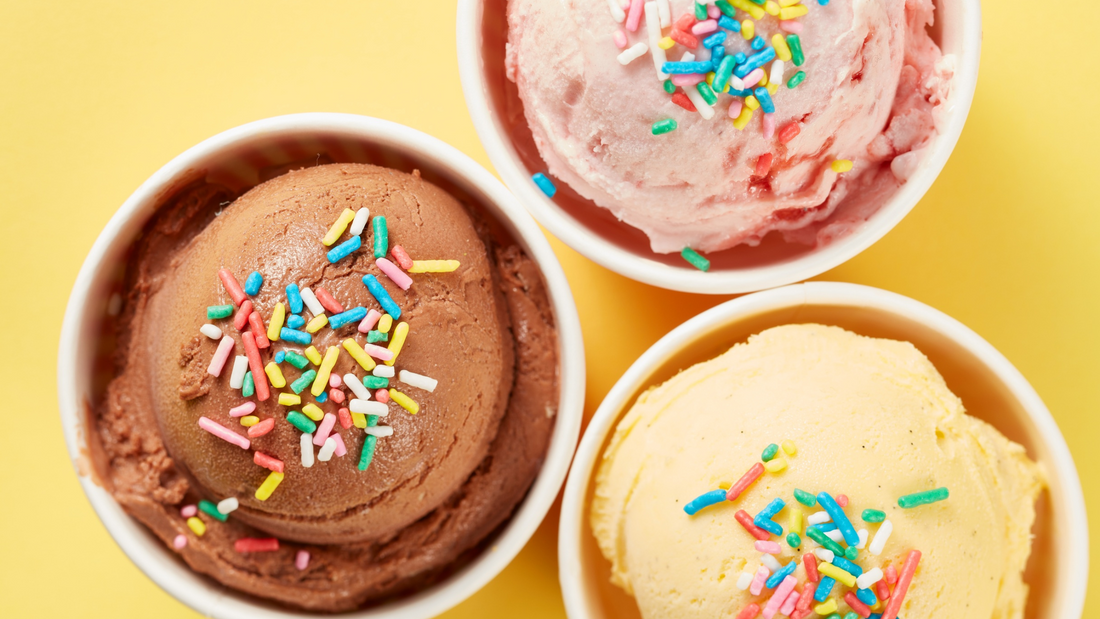
The Chemistry of Ice Cream: A Delicious Blend of Science and Flavor
Ice cream is more than a sweet treat; it's a fascinating science product! Every scoop you enjoy results from an intricate balance of chemistry and physics. Numerous scientific principles are at play from the moment you combine the ingredients to the final step of the freezing process. Whether making homemade ice cream or indulging in commercial ice cream, understanding the science of ice cream adds a whole new level of appreciation to this classic dessert. Let's dive into the chemistry behind your favorite frozen treat!
The Role of Freezing Point and Freezing Point Depression
One of the first scientific principles you'll encounter when making ice cream is the concept of the freezing point. Water freezes at 32°F (0°C), but in the case of ice cream, we aim for a much lower temperature to ensure a smooth texture. This is where freezing point depression comes into play. By adding ingredients like sucrose (sugar), milk solids, and stabilizers such as carrageenan and guar gum, we lower the freezing point of the water molecules in the mixture. This allows the ice cream to freeze at a lower temperature, preventing large ice crystals from forming and ensuring a smooth, creamy texture.
The Formation of Small Ice Crystals and Emulsion
When you add cold to an ice cream mix, the water molecules start to freeze, but don't freeze uniformly. Instead, they form tiny ice crystals, crucial for achieving the smooth consistency that makes ice cream enjoyable. In homemade ice cream, this process can be slower, often resulting in larger ice crystals, but with the right tools (like an ice cream maker), you can control the size of these ice crystals to achieve the desired creamy texture.
In commercial ice cream, manufacturers use high-tech machines that rapidly freeze the ice cream mix, ensuring that only small ice crystals form. This rapid freezing is achieved by using high pressure and refrigerants that quickly bring the temperature to a low level, creating a delicate balance of fat globules and water molecules. This leads to a smoother texture and a more pleasant eating experience.
The Importance of Emulsifiers and Fat Molecules
Emulsifiers play a pivotal role in creating the perfect ice cream texture. These substances help mix fat and water, which naturally want to separate. Lecithin, often found in egg yolk and milk proteins, is one of the most common emulsifiers in ice cream. It helps form a stable emulsion, where fat droplets are suspended in the water phase, creating a smooth and uniform texture. Without emulsifiers, the fat droplets would coalesce, forming an unpleasant, greasy texture.
In addition to lecithin, diglycerides are often used as emulsifiers in homemade and commercial ice cream. These molecules help disperse the fat molecules (primarily milk fat) in the mix, preventing them from clumping together and ensuring that the ice cream is smooth and creamy.
The Role of Air Bubbles in Ice Cream
Ice cream is not just frozen cream—it's full of tiny air bubbles that give it that light, fluffy texture. Churning during ice cream making incorporates air into the mix, and the air bubbles become trapped within the ice cream. This air is a key part of the texture and volume of ice cream and contributes to the sensory experience of eating it.
However, these air bubbles are not just randomly distributed. They are held in place by the proteins and stabilizers in the ice cream, which help prevent the bubbles from popping during the freezing process. The viscosity of the ice cream mixture also affects how well the air bubbles are trapped. A thicker mixture, such as one containing higher fat content, can hold air more effectively.
Homemade vs. Commercial Ice Cream: A Study in Science and Technology
While making ice cream at home can be a fun and rewarding experience, it's essential to understand its science. Homemade ice cream is typically made using an ice cream maker, which churns the mixture as it freezes. However, homemade ice cream often lacks the smoothness of store-bought varieties because it's harder to control the freezing point and the formation of small ice crystals.
On the other hand, commercial ice cream is produced using large-scale equipment that can rapidly freeze the mix under high pressure to create the perfect balance of fat, air, and small ice crystals. This process ensures a smooth texture, small ice crystals, and evenly distributed fat droplets. Manufacturers often use stabilizers like guar gum to maintain the ice cream's consistency over time, preventing it from becoming too icy or hard.
The Use of Liquid Nitrogen in Ice Cream Making
Have you ever wondered about those fancy ice cream shops that use liquid nitrogen to freeze their ice cream right before your eyes? This technique rapidly freezes the ice cream mix, creating ultra-fine ice crystals. The low temperature of liquid nitrogen causes coalescence of the ice crystals, forming a smoother texture with fewer visible ice chunks. This method has gained popularity recently, particularly in high-end ice cream parlors, due to the dramatic presentation and the science behind the process.
The Magic of Ice Cream: Food Science in Action
Ultimately, the chemistry of ice cream is a perfect blend of food science, physics, and culinary art. From emulsifiers to proteins, air bubbles to freezing point depression, every ingredient and every process is a delicate balance of science. Whether crafting your ice cream at home or enjoying a scoop from a commercial ice cream manufacturer, the food science that goes into every batch ensures that every spoonful is as delightful as the last.
So next time you enjoy a scoop of your favorite ice cream, you can appreciate the chemistry of ice cream that makes it all possible, from the milk solids and water freezing to the solvent properties of sugar and the colloids that keep everything together. Ice cream isn't just a treat; it's a testament to the wonders of science!
